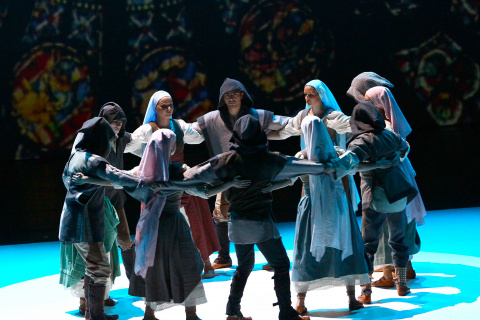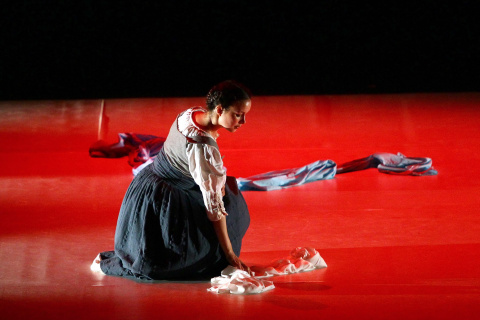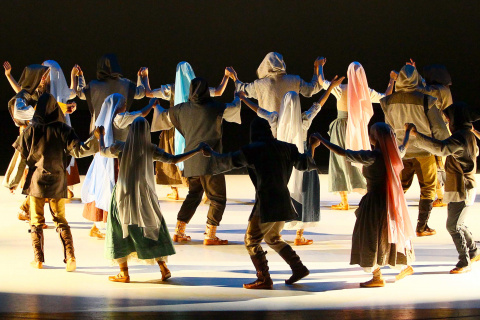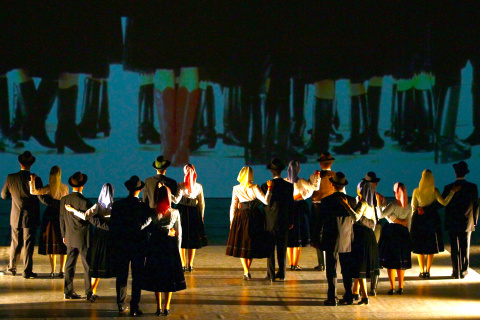
I. Memento mori! (Remember Death!)
II. La danse du diable (The Dance of the Devil)
I
II.Romantischer Nachtanz (Romantic encore)
The Dance of the Devil thematizes the emergence, spreading and continuation of the old style forgós-forgatós (turning) dances in the Carpathian Basin. The topic is that of dance history but without historicization. The folk dance and folk music traditions of the region are incorporated and shown in relation to their links with the intellectual and artistic currents of European cultural eras. Medieval philosophy, the dance of death, new dance and music trends appearing in the 15-16th century, baroque sensuality, the interaction of court and folk culture, Reform era and current views on dance are staged in the author’s interpretation.
The first movement looks at the transformation of medieval round dance into individual turning couple dance, at the same time alluding to the ecclesiastical viewpoint on how dance should be perceived. The new and more relaxed forms of dance and attitude known from contemporary representations appeared as the work of the devil and were regarded as a condemned sin of man in regulations and writings protecting morality.
The second movement focuses attention on the dance and music trends of 15-17th century European dance culture, certain forms of which can still be found in the turning dance traditions of Hungarian, Slovakian, Moravian and Romanian nationalities. Either with bold imagery or with disguised, more subtle references, the author makes history visible in the present.
The last movement presents the results of the national style-building attempts of Hungarian Romanticism: verbunk and csárdás, which was once treated with prejudice and has absorbed and incorporated the traditions of couple turning dances. The dance of the devil is past and present simultaneously, the changes in dance styles is a universal and everlasting process that we all take part in and contribute to.
Lenght: 70 min.




